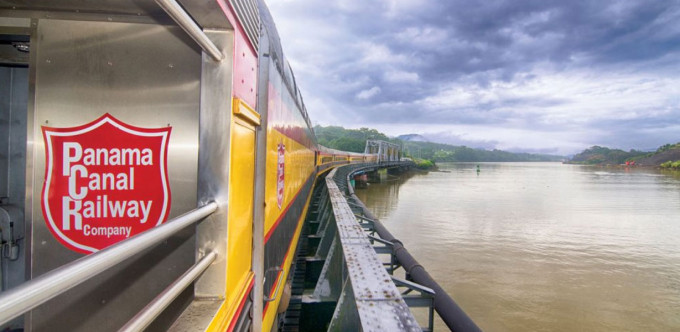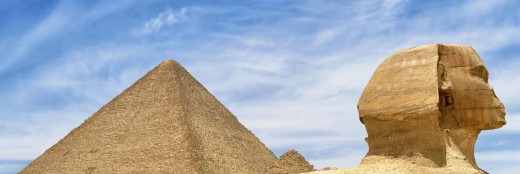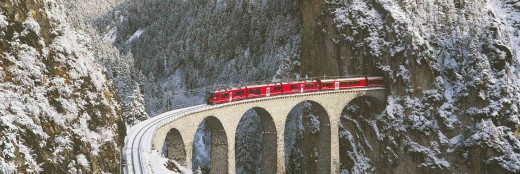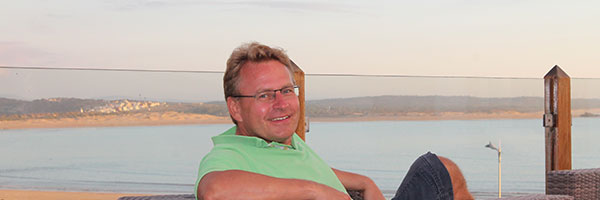
Go from the Atlantic Ocean to the Pacific Ocean by train in one hour
Wednesday, February 10, 2021 6:45 PM by Jens
From the Atlantic to the Pacific in just one hour by train. This can only be done with the Panama Canal Railways. Along locks, a giant artificial lake and with ships right outside your train window, the train runs through the jungles of Panama. 76 km in one hour on a railway it took 5 years to build. A railway which was built before the canal was built. A railroad in the middle of the jungle with a close connection to the United States and immigration to California in the 19th century.
A train ride that starts with a taxi through the jungle
I get in the Taxi and ask to be taken to the port of Colon - Cristoba. The taxi driver looks amazed. "Colon Port is dangerous," he says. Well, I'm just going to the train station in Cristoba, I explain. He looks relieved.
This is how my train journey from the Atlantic to the Pacific begins. From one big ocean to another by taxi - and then return with the late departure by Panama Canal Railways from Colon on the Atlantic coast to Balboa near Panama City on the Pacific coast of Panama.
There is an afternoon queue on the way out of Panama City. But soon the city becomes jungle and a wide highway that crosses Panama from sea to sea.
In Colon I drive towards the customs area and the big port of Cristoba. Here in the middle of no man's land is an elusive station building and on track 1 the diesel train with the carriages that will take me from the Atlantic to the Pacific along the Panama Canal by train in 60 minutes.
The train between Balboa's Pacific Terminal In Colazon and Atlantic Terminal in Cristoba just outside Colon runs the 76 km twice a day. Early morning from Balboa and late afternoon return from Colon. There are not that many locals on the platform. We, in turn, are a handful of tourists expectantly boarding the train's lookout carriage. The viewing car is from 1938 and originally ran on the Southern Pacific Railroad in the USA - so it is used to crossing a country from the Atlantic to the Pacific.
I find a good seat and get my little snack box handed out and I am ready for a transcontinental train journey of just one hour from the Atlantic to the Pacific.
The railway came first
The idea of transporting goods and passengers from the Atlantic to the Pacific via Panama was kick-started by the great "goldrush" in California. Freight and passengers were to be moved between East and West in the United States. This led to the establishment of a railway between Colon (Atlantic) and Balboa (Pacific) in Panama - before the Panama Canal was built.
Construction of the Railway began in 1850 and the railway was inaugurated in 1855, costing $ 8 million to build. It is estimated that between 5 and 10,000 people died during the construction of the railway. The most common causes of death were fatigue, yellow fever, malaria and cholera.
The transcontinental railway is just 76 km long, but crosses tropical swamps, gorges and mountains across Panama.
When the Panama Canal was to be built, the railway became an essential part of the project. The railway transported material and moved not least soil from the many excavations. In connection with the construction of the Panama Canal, the route had to be rerouted. The giant artificial Gatun lake flooded part of the original route.
The railway was last upgraded between 1998 and 2001. Today, the railway is primarily used for transporting more than 1500 containers daily and then of course for the 2 daily passenger departures.
Departure for the Pacific Ocean
The day is coming to an end as the train sets off from the Platform in Colon. And it's getting darker fast. It's a bit of a disappointment when you sit in a viewing car.
It does not take long before we reach the Gatun locks between Lake Gatun and the bay of Colon.
From here, the train route meanders along Gatun Lake and the many small and large bridges and elevations over which the rails are laid. It is here I get the first feeling that it has not been easy to build the railway in the middle of the swamps of the tropical jungle.
On Lake Gatun, I see in the twilight the first ships crossing the canal in the distance.
The train is approaching Gamboa and suddenly we are looking straight into the side of a ship. Its a large cargo ship. The ship's lanterns and lights light it up here in the middle of the Panama jungle. The ship is on its way from the canal itself and out into Gatun Lake.
From here the train runs along the canal down towards the locks Pedro Miguel and Miraflores and several ships show up. Container ships, bulkers and cruise liners with people on the deck. All ships are with lit lanterns and deck lighting as ornate Christmas trees. The landscape we drive through is becoming less and less jungle. There are small settlements along the canal now.
The train drives slowly past the lighted locks on its way down to Balboa. But not slowly enough for us to see the ships rise or fall. Here the ships lie like pearls on a string and you can see the huge locks and hear the water when the locks are filled or emptied.
The train continues slightly downwards. We are soon at the end of the road. We are by the Pacific. The train enters slowly at Balboa Corazol Railway Station.
Arrival from the Atlantic Ocean
I step out and can not help but think of the huge sacrifices that have been made to lay the rails that I have ridden on and the canal that runs along its tracks. But of course also to pay tribute to visionaries like Henry Aspinwall who was the head of the company that laid the railway and not least John Frank Stevens who created the idea of building a canal across Panama.
And thank you for reminding me how easy it is to experience the world today. Imagine that a boat trip via Panama was one of the ways to travel between the East Coast and the West Coast of the United States in 1855. It took approx. 40 days incl. the trip with the Panama Canal Railways. And yes, today you can sail the same trip in 23 days on a cruise ship via the Panama Canal - but that's a completely different story!
Frequently asked questions
How to buy a ticket for the Panama Canal Railways?
You arrive at the train station in Colon or Balboa and buy the ticket before departure. It is never sold out, but there may be a rift about the seats in the viewing car.
How much is a ticket for the Panama Canal Railways?
A single ticket costs 25 USD. There is a discount for children and seniors.
When do Panama Canal Railways run?
There is a departure from Balboa near Panama City on the Pacific side at 7.15 in the morning and the train returns at 5.15 in the afternoon from Colon on the Atlantic side. The passenger train only runs on weekdays.
You can read more about the train, departure times and ticket prices at the link below.
Maybe these articles could be interesting too?







